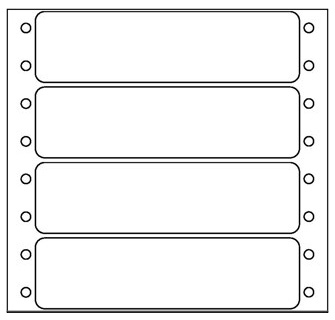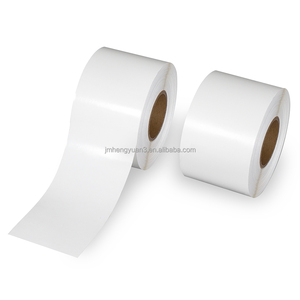Perfect Blank Labels for packaging.
Perfect Blank Labels for packaging.
Blog Article
Understanding Just How Blank Labels Job to Boost Your Labeling Experience
Recognizing the technicians of blank labels is essential for optimizing your labeling methods across different contexts. To completely realize just how these labels can change your procedures, one must consider the different types available and the myriad ways they can be customized to suit specific needs.

Advantages of Using Blank Labels
Blank labels supply a flexible solution for different labeling requirements, making them invaluable in both individual and professional settings. Their versatility permits individuals to develop customized labels customized to specific demands, boosting organizational performance. Whether utilized in office, retail environments, or industrial applications, blank labels promote the identification and classification of items, documents, and personal things.
One significant benefit of blank labels is their cost-effectiveness. By enabling customers to publish just the labels they need, waste is reduced, and stock administration comes to be extra manageable. Additionally, blank labels work with numerous printing methods, including inkjet and laser printers, making them available for different individuals.

Furthermore, using blank labels simplifies the process of upgrading details, as individuals can conveniently publish new labels to replace out-of-date ones, making sure that all products and records are accurately identified. On the whole, blank labels offer a practical and effective labeling option for varied applications.
Types of Blank Labels Available
What options are available when it comes to blank labels? Blank labels come in a variety of types, each fit for different applications and preferences.
One more prominent option is artificial labels, commonly made from products like polyester or plastic. These labels are understood for their longevity and resistance to water, chemicals, and tearing, making them ideal for rough settings. They are commonly made use of in commercial setups or for labeling products that may be subjected to moisture.
Additionally, there are thermal transfer labels, which require a printer that uses heat to move ink onto the tag surface area. These labels are favored for their top notch print and longevity.
Finally, specialty labels accommodate specific demands, such as detachable labels for momentary use or high-temperature labels for extreme problems. Recognizing these choices enables individuals to select one of the most proper blank label for their distinct labeling requirements.
Modification Options for Labels
A large range of customization alternatives is offered for labels, allowing individuals to tailor them to particular demands and branding demands. Users can pick from different sizes, forms, and materials to ensure that the labels properly fit their designated purpose. Usual products include paper, polyester, and plastic, each providing various levels of durability and visual appeal.
Shade options play a vital role in modification, enabling brand names check my reference to maintain uniformity with their corporate identification. Users can select from a range of colors or perhaps choose for custom printing to match certain branding elements. Furthermore, labels can be published with distinct layouts, logos, and text, boosting brand acknowledgment and aesthetic effect.
An additional important element is the selection of adhesive. Labels can be created with permanent, removable, or repositionable adhesives, depending upon the application needs. This flexibility enables for efficient labeling remedies across different settings, from retail to industrial settings.

Tips for Effective Labeling
Reliable labeling goes past personalization; it also involves strategic considerations that boost performance and communication. To attain reliable labeling, begin by plainly specifying the function of each tag. Take into consideration the info that needs to be shared and ensure it is presented in an uncomplicated way. Using succinct language and preventing lingo can substantially improve understanding.
Following, prioritize presence by selecting proper colors and font styles. High contrast between message and background enhances readability, while bigger fonts assist in fast identification. In addition, ensure that labels are placed in a regular and rational fashion, making it easier for individuals to find and translate information.
Take into consideration the resilience of labels. Select products suited for the particular setting where the labels will be used, whether it be indoors or outdoors. Water resistant or tear-resistant alternatives might be necessary depending upon the context.
Finally, regularly review and update your labels to show any kind of adjustments in information or usage. This proactive approach not only preserves quality yet also avoids confusion in time. By complying with these pointers, you can make the most of the efficiency of your labeling efforts, ensuring they serve their designated function effectively.
Applications of Blank Labels
Blank labels go to these guys use countless applications throughout numerous sectors, making them an invaluable device for company and interaction. These functional labels are generally made use of in storehouses for stock administration, enabling companies to easily identify and track items. By using blank labels to storage bins, racks, or pallets, firms can enhance their operations and decrease the likelihood of mistakes.
In the medical care market, blank labels play an important function in labeling drugs and clinical products, making sure proper identification and use. Adjustable labels can include crucial info such as dosage, expiry dates, and patient news information, improving safety and conformity.
In retail, blank labels help in pricing items, offering promotions, or identifying shelf areas, which eventually boosts the client experience. They enable quick updates to prices or product details without the need for pre-printed labels.
In addition, blank labels are helpful for personal usage, such as organizing office, crafting, or labeling food containers. Their flexibility allows people to produce tailored options that meet certain needs. Generally, the applications of blank labels are extensive, highlighting their importance in promoting performance and clearness in numerous settings.
Conclusion
Finally, blank labels present a flexible and reliable solution for different classifying needs. Their versatility in dimension, shape, and material permits customized applications across various environments. By leveraging personalization alternatives and reliable labeling techniques, companies can boost clarity and communication (Blank Labels). Eventually, the assimilation of blank labels right into functional processes adds to boosted performance, making them an invaluable source for both personal and specialist use.
Report this page